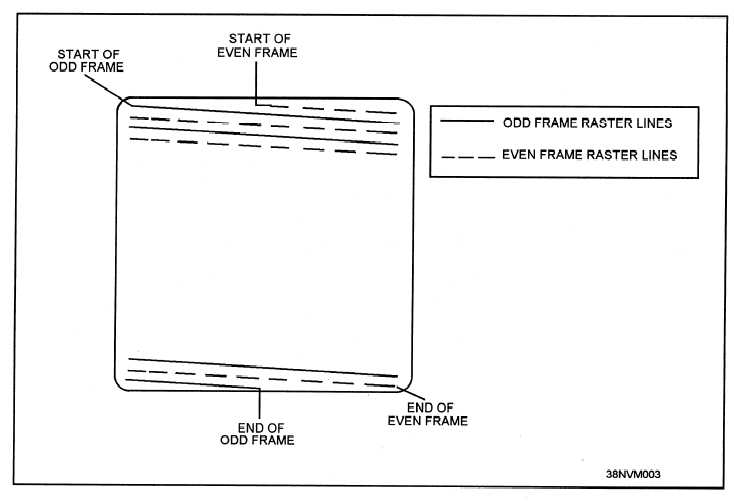Figure 1-3.-Inter1aced scan of a CRT.
merge point. Two methods are used to increase the
Interlaced scan CRTs are fine for television
resolution of CRTs. These are interlaced scan and
noninterlaced scan.
INTERLACED SCAN.– Interlaced scanning
makes it possible to double the number of horizontal
lines in a picture. Figure 1-3 illustrates the principle
of interlaced scanning in which two scans are required
to display the full picture. The odd raster starts in the
top left corner of the CRT, while the even raster starts
in the top center of the CRT. The two complete scans
paint the entire picture. By interlacing the odd and
even lines of a picture, resolution can be increased
without a noticeable flicker on the screen. Interlaced
scanning is used with standard television and some
computer monitors.
It increases the maximum
number of lines per frame to 525. Because of the
vertical retrace time, the number of visible lines is
512.
1-4
transmissions and alphanumeric displays, but can
cause a visible flicker when displaying fine digital
graphics because of the abrupt changes in the levels of
intensity required.
To solve this problem, most
computer monitors use noninterlaced scan.
NONINTERLACED SCAN.– Noninterlaced
scanning paints the entire frame of data from top to
bottom. Figure 1-4 illustrates the noninterlaced
scanning method of painting a single frame. To paint
an entire frame without a noticeable flicker, the
horizontal frequency is increased, which increases the
number of lines per frame. The vertical frequency is
also decreased from 60 Hz to 50 Hz in most monitors,
which further increases the number of lines.


